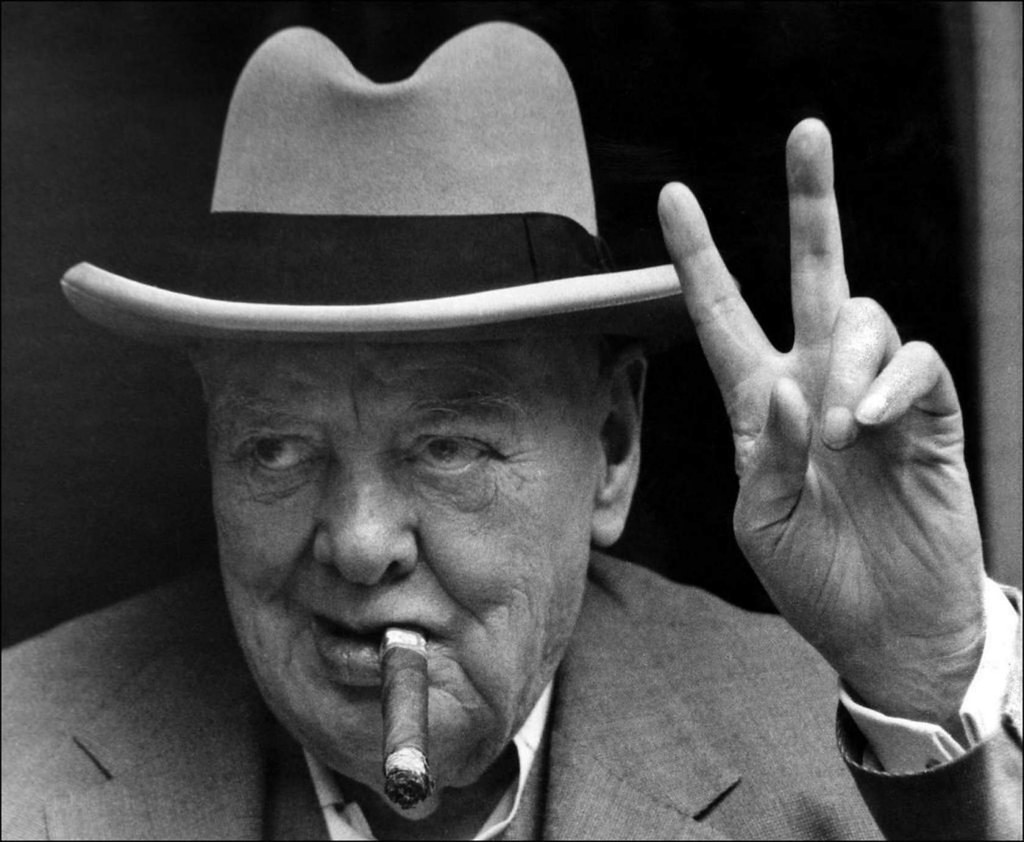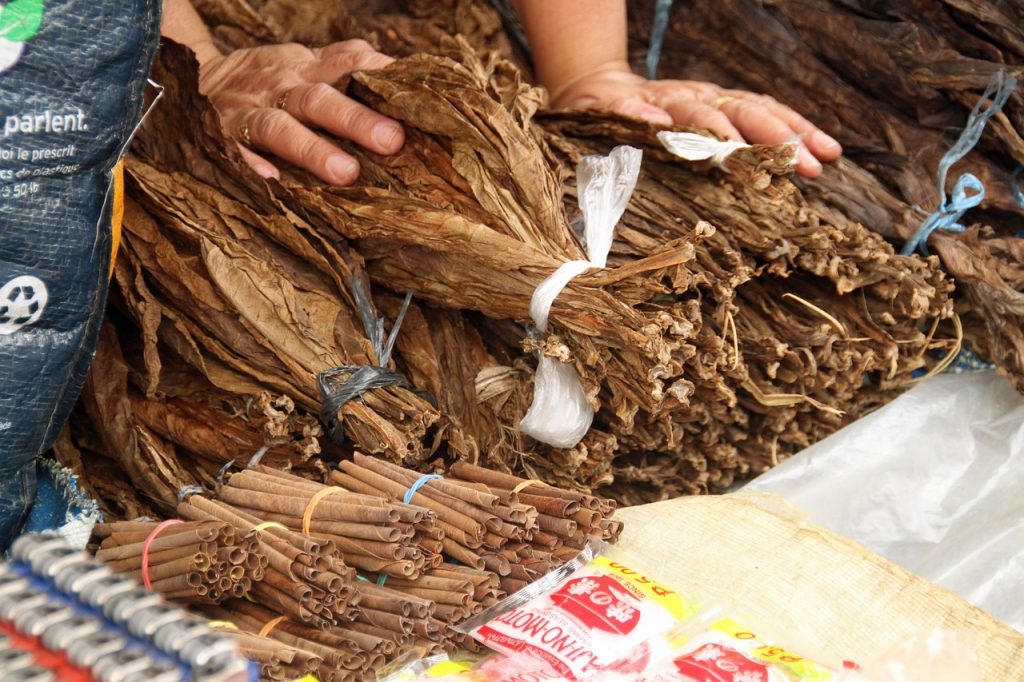Whether you’re a cigar aficionado or simply curious about the history of tobacco, the evolution of this plant from ancient rituals to modern-day consumption offers a fascinating journey through time. From ancient civilizations using tobacco for spiritual ceremonies to the mass production and commercialization of cigarettes in the modern world, this article provides a comprehensive look at the intriguing origins and development of tobacco and cigars. So sit back, relax, and embark on a captivating exploration of this ancient plant that has shaped cultures and economies throughout history.
Ancient Origins of Tobacco
Discovery of Tobacco Leaves by Ancient Civilizations
Tobacco has a rich history, with its origins dating back to ancient civilizations. The discovery of tobacco leaves can be traced back to prehistoric times when early humans stumbled upon the plant and recognized its potential. Indigenous people of the Americas were the first to encounter and utilize tobacco.
Tobacco as a Sacred Plant in Indigenous Cultures
In many indigenous cultures, tobacco held significant spiritual and cultural importance. It was considered a sacred plant and was used in various rituals, ceremonies, and traditional practices. Native American tribes, such as the Mayans and Aztecs, incorporated tobacco into their religious rituals, believing it to be a means of communication with the spiritual realm. Picture a Mayan priest preparing for a sacred ceremony with carefully selected tobacco leaves. The use of tobacco in peace pipe ceremonies among various tribes further highlights its spiritual significance. “In our every deliberation, we must consider the impact of our decisions on the next seven generations,” reflects the spiritual and cultural depth of indigenous practices, including tobacco use, as stated in the Iroquois Confederacy maxim.
Early Cultivation and Use of Tobacco
The cultivation of tobacco began in the Americas, where ancient civilizations started growing the plant for its leaves. These civilizations developed specific cultivation techniques to ensure a successful harvest. Tobacco was primarily used for its medicinal and ceremonial purposes, often smoked, chewed, or used as snuff. Consider the sophisticated techniques ancient civilizations developed to cultivate and use tobacco.
Introduction to Tobacco in Europe
Exploration and Introduction of Tobacco to Europe
During the late 16th and early 17th centuries, several Englishmen commented on the economic potential of tobacco, with Sir Walter Raleigh and John Rolfe being among the most notable figures.
Sir Walter Raleigh, who is often credited with popularizing tobacco in England after his expeditions to the Americas, was enthusiastic about the economic benefits that tobacco could bring to England. Although specific quotes from Raleigh about the profitability of tobacco are not well-documented, his efforts to promote tobacco use and cultivation were significant in establishing its value as a profitable commodity.
John Rolfe, an early English settler in Virginia, played a crucial role in the development of the tobacco industry. Rolfe’s introduction of a sweeter strain of tobacco greatly boosted the colony’s economy. He wrote extensively about the potential profits from tobacco cultivation, highlighting its importance as a cash crop for the maintenance and prosperity of the colonies.
The enthusiasm and efforts of Sir Walter Raleigh and John Rolfe in promoting tobacco underscore its perceived economic potential during this period. Their contributions were instrumental in establishing tobacco as a valuable commodity for England.
Initial Reactions and Controversies
The introduction of tobacco to Europe sparked both curiosity and controversy. While some saw the potential of tobacco as a medicinal and recreational substance, others condemned its use, viewing it as a dangerous and sinful habit. King James I of England famously denounced tobacco in his treatise “A Counterblaste to Tobacco,” calling it “a custom loathsome to the eye, hateful to the nose, harmful to the brain, dangerous to the lungs.” Imagine the debates sparked by the arrival of tobacco in Europe.
The Emergence of Tobacco as a Luxury Product
As tobacco gained popularity in Europe, it began to be associated with the upper class and elite. Tobacco became a luxury product, and its consumption was seen as a symbol of status and wealth. This perception led to an increase in demand and the establishment of a thriving tobacco industry. Despite his personal dislike for tobacco, particularly smoking, King Louis XIV of France ruled during a time when tobacco’s status was elevated by its association with the nobility and wealthy elite. His court, while adhering to his preferences, could not diminish the growing trend of tobacco consumption across Europe.
The Rise of the Tobacco Industry
Colonial Tobacco Plantations and Slave Labor
With the increasing demand for tobacco in Europe, colonial powers, such as the British Empire, established large-scale tobacco plantations in their colonies. These plantations relied heavily on slave labor, with enslaved Africans brought to the Americas to work on the plantations. The vast majority of tobacco during the late 16th century was cultivated by slave labor. Slaves planted, harvested, cured, and packaged tobacco in an extremely labor-intensive process. Between 1619 and 1775, generations of enslaved people labored in the American colonies to create wealth for their owners. The tobacco plantation system was known to be brutal and exploitative, enriching a small elite while causing immense suffering and economic disparity for the enslaved workers.
The Development of Tobacco Processing Techniques
As the tobacco industry expanded, innovative processing techniques were developed to meet the growing demand for tobacco products. Techniques such as curing, fermenting, and aging were refined to enhance the flavor and quality of tobacco leaves. These advancements allowed for a more consistent and desirable smoking experience.
Impact of the Industrial Revolution on Tobacco Production
The Industrial Revolution had a profound impact on tobacco production, transforming it from a labor-intensive agricultural activity to a more mechanized and efficient process. The introduction of machinery, such as steam-powered plows and threshers, significantly increased the efficiency of tobacco farming, reducing the reliance on manual labor. Additionally, advancements in transportation, such as railways and steamships, facilitated faster and more widespread distribution of tobacco products. This mechanization and improved logistics allowed tobacco production to scale up, meeting the growing global demand. The rise of factories and industrial production methods also enabled the mass production of tobacco products, particularly cigarettes, which became widely popular during this period. These changes contributed to the expansion of the tobacco industry and the increased accessibility of tobacco products to a broader population. The Bonsack Machine was a game changer in terms of cigarette production. We will go over that innovation more below.
Tobacco in Popular Culture
Tobacco’s Association with Power and Prestige
Throughout history, tobacco has been closely associated with power, prestige, and wealth. It has been regarded as a symbol of authority and sophistication, with many influential figures and leaders being depicted with cigars or cigarettes. The act of smoking became intertwined with notions of success and social status, further fueling its popularity. Winston Churchill’s iconic image with a cigar symbolized strength and determination. “I am easily satisfied with the very best,” Churchill famously said, often seen with his signature cigar.

Depictions of Tobacco in Literature and Art
Tobacco’s cultural significance is evident in its portrayal in literature and art. Countless works, from classic novels to famous paintings, have depicted characters smoking or engaging in tobacco-related activities. These depictions often serve as a reflection of the societal norms and attitudes towards tobacco during different periods. For example, Mark Twain, an avid smoker, often featured characters in his novels who enjoyed tobacco, reflecting his personal habits and the era’s cultural acceptance of smoking. “If smoking is not allowed in heaven, I shall not go,” Twain famously remarked.
The Portrayal of Tobacco in Films and Media
The influence of tobacco on popular culture continued in the 20th and 21st centuries, with its frequent appearance in films and media. The portrayal of characters smoking in movies became a common sight, creating a sense of glamour and rebelliousness associated with tobacco use. However, as awareness about the dangers of smoking grew, these representations faced criticism and calls for greater responsibility in media content. Notably, the classic film “Casablanca” featured Humphrey Bogart smoking, a scene that became iconic. “Of all the gin joints in all the towns in all the world, she walks into mine,” Bogart famously said, often seen with a cigarette in hand.

The Development of Cigarettes
Invention of the Cigarette Rolling Machine
The invention of the cigarette rolling machine in the late 19th century revolutionized the tobacco industry. This innovation, patented by James Albert Bonsack in 1884, allowed for the mass production of cigarettes with standardized sizes and shapes. Theoretically, the Bonsack Machine could roll as many cigarettes in a day as 48 people could. The convenience and affordability of cigarettes made them increasingly popular among smokers, leading to a decline in the consumption of other tobacco products. This shift from manual labor to mechanization increased efficiency and significantly reduced production costs, making tobacco more accessible to the general public.
Industrialization and Mass Production of Cigarettes
The industrialization of the tobacco industry played a crucial role in the mass production of cigarettes. Advances in manufacturing technologies enabled faster and more efficient cigarette production. Alongside improved advertising strategies, this led to a rapid increase in cigarette consumption worldwide, transforming the tobacco market.
Marketing and Advertising Strategies of Tobacco Companies
Tobacco companies capitalized on the growing popularity of cigarettes through marketing and advertising campaigns. These campaigns targeted specific demographics, creating an allure around smoking. Advertisements often depicted glamorous and desirable lifestyles associated with smoking, further reinforcing the perception that smoking was a social norm. Edward Bernays, often referred to as the “father of public relations,” played a significant role in shaping early 20th-century tobacco advertising strategies. “The conscious and intelligent manipulation of the organized habits and opinions of the masses is an important element in democratic society,” said Bernays.
Health Concerns and Tobacco Regulation
Emergence of Scientific Research on Tobacco and Health
In the mid-20th century, scientific research began to shed light on the detrimental health effects of tobacco use. Studies on the link between smoking and various diseases, such as lung cancer and heart disease, raised public awareness about the hazards of tobacco consumption. In the mid-20th century, scientific research began to shed light on the detrimental health effects of tobacco use. Studies on the link between smoking and various diseases, such as lung cancer and heart disease, raised public awareness about the hazards of tobacco consumption. The 1964 Surgeon General’s report played a pivotal role in this shift, concluding, “Cigarette smoking is a health hazard of sufficient importance in the United States to warrant appropriate remedial action.” This landmark report highlighted the strong evidence connecting smoking to lung cancer and other serious health conditions, significantly influencing public health policies and perceptions regarding tobacco use.
The Effects of Smoking on the Human Body
Scientific research has established a clear connection between smoking and numerous health risks. Smoking is known to increase the risk of developing various cancers, respiratory diseases, and cardiovascular problems. It also negatively affects overall lung function and can lead to addiction. The harmful effects of secondhand smoke further highlight the dangers of tobacco use. “Cigarette smoking is the chief, single, avoidable cause of death in our society and the most important public health issue of our time,” said Dr. C. Everett Koop, former Surgeon General.
Legal and Social Efforts to Regulate Tobacco
In response to growing health concerns, governments around the world began implementing various regulations to control tobacco consumption. These measures include restrictions on smoking in public places, increased taxation on tobacco products, and the implementation of graphic warning labels on cigarette packaging. Public awareness campaigns and anti-smoking initiatives have also been instrumental in promoting a smoke-free society. Dr. Gro Harlem Brundtland, former Director-General of the World Health Organization, emphasized the significance of these efforts, stating, “A cigarette is the only consumer product which when used as directed kills its consumer.”

Tobacco in the 21st Century – Trends and Challenges
Changing Attitudes Towards Tobacco Consumption
In recent years, there has been a significant shift in public attitudes towards tobacco consumption, resulting in a decline in smoking rates across many countries. This trend is attributed to increased awareness of the health risks associated with tobacco use, leading more people to quit smoking or avoid starting altogether. Here are some statistics highlighting this trend:
- United States:
- According to the Centers for Disease Control and Prevention (CDC), the percentage of adults who smoke cigarettes has decreased from 20.9% in 2005 to 11.5% in 2021. This represents a 45% decline in smoking rates over 16 years.
- United Kingdom:
- The Office for National Statistics (ONS) reported that the proportion of current smokers among adults aged 18 years and over in the UK fell significantly from 14.7% in 2018 to 14.1% in 2019. This decline reflects the ongoing efforts to reduce smoking rates and promote public health.
- Australia:
- The Australian Institute of Health and Welfare (AIHW) reported that the proportion of people aged 14 and over who have never smoked has increased to the highest levels since the survey began, rising from 49% in 1991 to 65% in 2022–2023 (AIHW 2024b, Table 2.1; Figure TOBACCO 1).
These statistics underscore the ongoing cultural shift towards a tobacco-free lifestyle, driven by comprehensive public health campaigns, stringent tobacco control policies, and increased awareness of the health risks associated with smoking. This trend reflects a broader global effort to reduce tobacco consumption and its associated health burdens.
The Rise of Alternative Tobacco Products
The 21st century has witnessed the emergence of alternative tobacco products as potential substitutes for traditional cigarettes. Electronic cigarettes (e-cigarettes) and heat-not-burn devices are gaining popularity among those seeking alternatives to smoking. These products are often marketed as safer options compared to conventional cigarettes, appealing to both current smokers looking to quit and new users who perceive them as less harmful.
Electronic Cigarettes (E-Cigarettes): E-cigarettes, also known as vapes, function by heating a liquid (commonly referred to as e-liquid or vape juice) to create an aerosol that users inhale. This liquid typically contains nicotine, flavorings, and other chemicals. E-cigarettes have been promoted as a tool for smoking cessation, and some studies suggest they may be effective in helping smokers quit. However, the long-term health effects of e-cigarettes are still under scrutiny. Concerns have been raised about the potential for lung injury, nicotine addiction, and exposure to harmful chemicals.
Heat-Not-Burn Devices: Heat-not-burn (HNB) devices heat tobacco to a temperature that releases a nicotine-containing aerosol without burning the tobacco. These devices are designed to deliver a smoking experience similar to traditional cigarettes but with fewer harmful chemicals produced during combustion. Despite these claims, the health impacts of HNB products are not yet fully understood, and ongoing research aims to determine their safety and efficacy.
Regulation and Public Health Concerns: The regulation of alternative tobacco products remains a challenge. In many countries, policies and regulations are still catching up with the rapid growth and technological advancements of these products. Public health officials are concerned about the appeal of e-cigarettes and HNB devices to young people, which could lead to a new generation of nicotine users. Additionally, the marketing strategies employed by manufacturers often blur the lines between smoking cessation tools and lifestyle products, complicating regulatory efforts.
Health Effects and Research Needs: While some studies suggest that e-cigarettes and HNB devices may be less harmful than traditional cigarettes, their long-term health effects are not fully known. Research is ongoing to assess the potential risks and benefits of these products.
Alternative tobacco products like e-cigarettes and heat-not-burn devices represent a significant shift in the landscape of tobacco use. While they offer potential benefits for smoking cessation, their health impacts and regulation remain complex and evolving issues. Ongoing research and effective regulation are crucial to ensure that these products contribute positively to public health.
Continued Use and Enjoyment Despite Health Risks
Despite the well-documented health risks, a segment of the population continues to use and enjoy tobacco products. For some, smoking remains a cultural or social activity, and the pleasure derived from tobacco use can outweigh concerns about health risks. This continued use highlights the addictive nature of nicotine and the complex relationship individuals have with tobacco. Many people continue to smoke despite knowing the risks because of the addictive properties of nicotine.
Closing Thought
The evolution of tobacco from ancient rituals to modern-day consumption is a captivating tale that intertwines culture, economy, and health. It traces the plant’s journey from the sacred ceremonies of indigenous tribes to its role as a global commodity, highlighting both its cultural significance and its economic impact. The ongoing health concerns and regulatory efforts reflect the complex legacy of tobacco.
© 2024 by iVices Reserved all rights. This document cannot be copied or communicated in any way without iVices’s prior written consent, whether it be electronically, mechanically, through photocopying, recording, or another medium.

